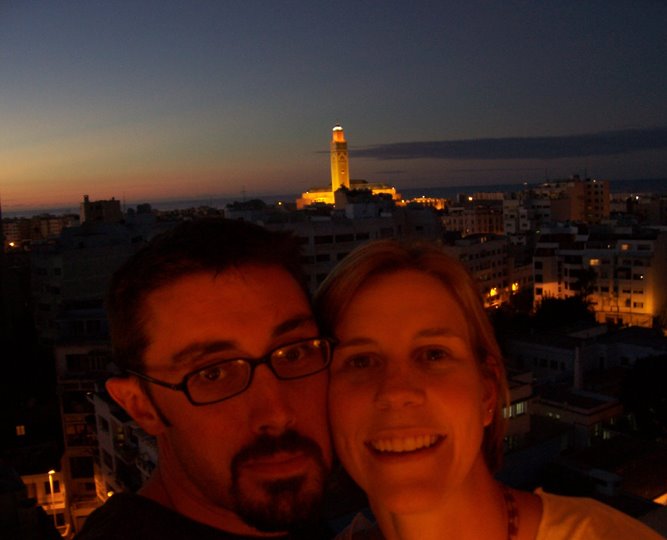Can my vacation have a mascot?
I'm on vacation this week, doing some house projects, hitting the gym (I've done almost 50 miles on the bike at midweek - that's good, for me, at least!) and spending what I'm sure Amy would say is entirely too much time online. But in some of that surfing, I learned that this morning the Vancouver 2010 folks unveiled a series of mascots for the Winter Games.
Now, I've thought a lot - too much, some folks might argue (and this post probably confirms) - about sports mascots in the States, in particular about how the controversial images of Washington's NFL team, Cleveland's Major League Baseball team and other such instances are handled. In each of those examples, the imagery focuses on Native American people and associates stereotypical imagery - whether you think they're respectful or not - to them. And my question, always, is why should one group of people be reduced to a stereotype?
Somehow, we don't have any teams named after African Americans, Latinos, Asians or gays. But we have a lot named after Indians and some folks are adamant that those depictions not be changed for a variety of reasons. A few years ago in a great ironic twist, an intramural basketball team at the University of Northern Colorado named itself the "Fighting Whites." (Get your shirts here. Sorry, they don't appear to be available in wife-beaters. That'd be just too much, I suppose.) All that's a long way of saying I find the imagery on tap for the 2010 Games a refreshing change of pace. Yet again, those Canaduns - as our friend Mike would say - seem to do things right. The main trio along with the official logo all reflect indigenous imagery. Nice to see a little diversity in what will bring unprecedented attention to one of our favorite cities - or favourite, as they'd write - in a few years. And nicer still to see that diversity reflected in a respectful manner, focusing on traditions and cultural stories rather than outdated stereotypes.
All that's a long way of saying I find the imagery on tap for the 2010 Games a refreshing change of pace. Yet again, those Canaduns - as our friend Mike would say - seem to do things right. The main trio along with the official logo all reflect indigenous imagery. Nice to see a little diversity in what will bring unprecedented attention to one of our favorite cities - or favourite, as they'd write - in a few years. And nicer still to see that diversity reflected in a respectful manner, focusing on traditions and cultural stories rather than outdated stereotypes.
Funny thing, though, about the mascots. Lots of folks commenting on the main CBC story this morning and on other Canadian blogs are seriously bent out of shape over these things. For example, one person wrote in to say, "If the kids enjoy them I guess they're all right. But … nobody will know what they are unless it is explained to them."
That's right, wouldn't want to use the international spotlight to in part educate and start conversations about different cultures at an athletic event famous for uniting countries from around the world. No, that'd be bad.
C'mon. My people are from the South in many ways, and I still don't have a clue what the '96 Atlanta mascot, Izzy, was, much less what it meant - though I have seen very similar costumes at gay-pride parades.  Yet, somehow those Games went on.
Yet, somehow those Games went on.
I suppose we should just be thankful the Games aren't in Anchorage or Juneau. If they were, somehow the U.S. organizers might have come up with a logo of a club-wielding Eskimo standing over a dead baby seal and considered themselves culturally enlightened.
Anyhow, like 'em or not, here are the images you'll see a lot of come 2010 and what they mean:
 This is the Games' official logo, an inukshuk, a traditional stone sculpture used by Canada's Inuit people. They're calling it Ilanaaq (el la nawk).
This is the Games' official logo, an inukshuk, a traditional stone sculpture used by Canada's Inuit people. They're calling it Ilanaaq (el la nawk).
Quatchi: A young sasquatch who comes from the mysterious forests of Canada. ... The sasquatch is a popular figure in local native legends of the Pacific West Coast. There is both a legendary ‘woman-of-the-woods’ (a slightly fearsome figure whose stories are told to discipline young children) and a ‘man-of-the-woods’ (a shy giant who lurks in the forests). The sasquatch reminds us of the mystery and wonder that exist in the natural world, igniting our imagination about the possibility of fantastical creatures in the great Canadian wilderness.
Miga: A young sea bear who lives in the ocean with her family pod, out past Vancouver Island near Tofino, British Columbia. Sea bears are part killer whale and part bear. Miga is part Kermode bear, a rare white bear that only lives in British Columbia. ... The sea bear is inspired by the legends of the Pacific Northwest First Nations, tales of orca whales that transform into bears when they arrive on land. The Kermode bear is a rare white or cream-coloured sub-species of the black bear that is unique to the central West Coast of British Columbia. According to First Nations’ legend, Kermode bears — also known as Spirit Bears — were turned white by Raven to remind people of the Ice Age. Orcas are also honoured in the art and stories of West Coast First Nations, as travelers and guardians of the sea.





1 comment:
Thoughtful post, Seth. I hadn't even seen the logos. Very classy.
However...
Yet again, those Canaduns - as our friend Mike would say - seem to do things right.
Other than this instance, I can't recall the Canadans ever getting something right. I give them credit here, but really.
Post a Comment